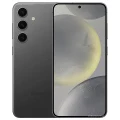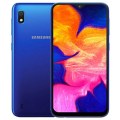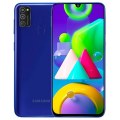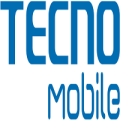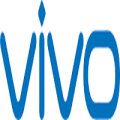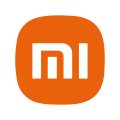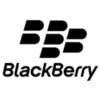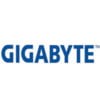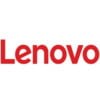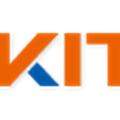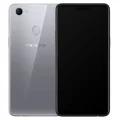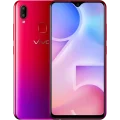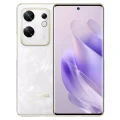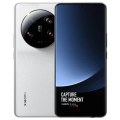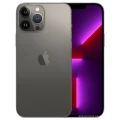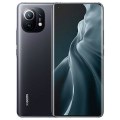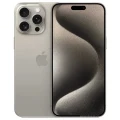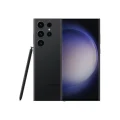- Awesome page
- Latest Mobile
- Smartphones
- Samsung Galaxy F12
Samsung Galaxy F12
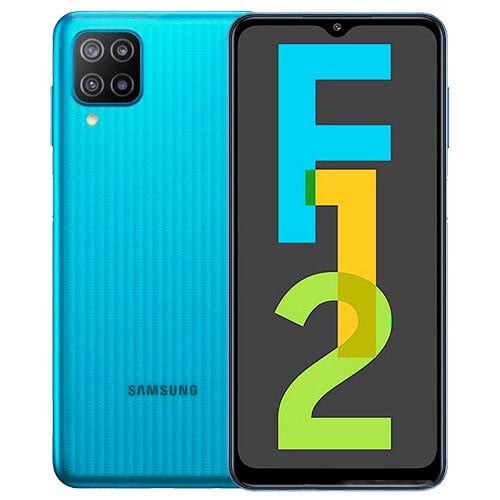


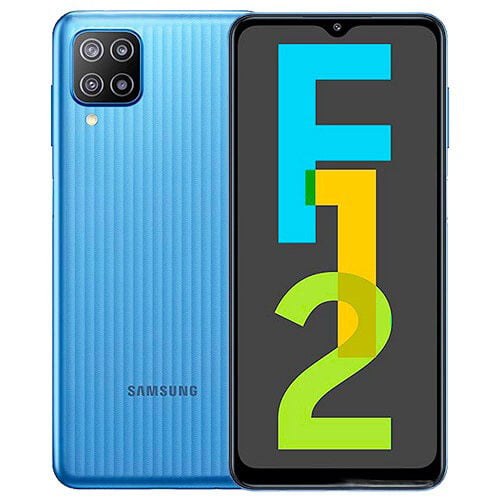
Samsung Galaxy F12 Price in Bangladesh
The Samsung Galaxy F12 is now available in Bangladesh with two variants: 64GB storage with 4GB RAM and 128GB storage with 4GB RAM. The Samsung Galaxy F12 Price in Bangladesh is BDT 15,000. It features a massive 6000mAh battery with 15W fast charging, ensuring long-lasting usage. This device runs on Android 11 and is powered by the Exynos 850 (8nm) chipset, offering solid performance for everyday tasks at an affordable price.
Specifications
General
| Model | Samsung Galaxy F12 |
| Announced | 2021, April 05 |
| Released | 2021, April 12 |
| Status | Available |
| Official price | ৳15,000 |
Design
| Dimensions | 164 x 75.9 x 9.7 mm (6.46 x 2.99 x 0.38 in) |
| Weight | 221 g (7.80 oz) |
| Colors |
Sea Green, Sky Blue, Celestial Black |
Network
| Technology | GSM / HSPA / LTE |
| 2G Network |
GSM 850 / 900 / 1800 / 1900 - SIM 1 & SIM 2 (dual-SIM model only) |
| 3G Network |
HSDPA 850 / 900 / 1700(AWS) / 1900 / 2100 |
| 4G Network |
LTE (unspecified) |
| GPRS <strong>GPRS</strong> (General Packet Radio Service) is a packet oriented mobile data service on the 2G and 3G cellular communication system's global system for mobile communications (GSM), Generally, GPRS is used for the purpose of wireless data transfer, such as sharing pictures and videos or browsing the Internet via a mobile phone connection. | |
| EDGE <strong>EDGE</strong> (Enhanced Data GSM Environment) is a wireless network technology generally considered the next step in the 2G network offers data transfer rates up to four times faster than ordinary GSM networks, Generally, EDGE is used for the purpose of wireless data transfer, such as sharing pictures and videos or browsing the Internet via a mobile phone connection. | |
| Speed | HSPA 42.2/5.76 Mbps |
Display
| Display Type <strong>Display Technology => </strong> A number of display technologies and types used in mobile phones => TFT (Thin Film Transistor), IPS (In-Place Switching), OLED (Organic Light Emitting Diode), AMOLED (Active-Matrix Organic Light-Emitting Diode), Super AMOLED (an even advanced version of AMOLED), Resistive Touchscreen (Resistive touchscreens contain two layer of conductive material with a very small gap between them which acts as a resistance), Capacitive Touchsceen (Capacitive touchscreen technology consists of a layer of glass coated with a transparent conductor) | PLS IPS capacitive touchscreen, 16M colors |
| Size | 6.5 inches, 102.0 cm2 (~81.9% screen-to-body ratio) |
| Resolution | 720 x 1600 pixels, 20:9 ratio (~270 ppi density) |
| Features |
Corning Gorilla Glass 90Hz |
Camera
Main camera
| Camera Setup | Quad |
| Primary <strong>Camera</strong> is able to capture photographs and usually videos, The most important characteristics of a camera are the resolution (measured in megapixels), lens focus type (fixed or automatic), higher megapixel cameras are known to capture higher quality photos, but not always a good measurement of the photos quality. |
48 MP, f/2.0, (wide), 1/2.0&amp;quot;, 0.8µm, PDAF 5 MP, f/2.2, (ultrawide) 2 MP, f/2.4, (macro) 2 MP, f/2.4, (depth) |
| Features |
LED flash, panorama, HDR |
| Video | 1080p@30fps |
Selfie camera
| Camera Setup | Single |
| Primary <strong>Camera</strong> is able to capture photographs and usually videos, The most important characteristics of a camera are the resolution (measured in megapixels), lens focus type (fixed or automatic), higher megapixel cameras are known to capture higher quality photos, but not always a good measurement of the photos quality. |
8 MP, f/2.2, (wide) |
| Video | 1080p@30fps |
Hardware
| Chipset <strong>Chipset</strong> is a group of integrated circuits designed to perform one or a more dedicated functions, often with real time computing constraints, Popular smartphones are equipped with more advanced embedded chipsets that can do many different tasks depending on their programming. | Exynos 850 (8nm) |
| CPU <strong>CPU</strong> (Central Processing Unit) mostly known as processors, CPU processes instructions in order to carry out certain functions that make your device operate properly. Processors are often described as the brain of computers, smartphones and tablets, Smartphones and tablets rely on processors to carry out their every task, Processors are an incredibly important factor in selecting any type of computing device, including your smartphone. | Octa-core (4x2.0 GHz Cortex-A55 & 4x2.0 GHz Cortex-A55) |
| GPU <strong>GPU</strong> (Graphics Processing Unit) is a single-chip processor designed to rapidly manipulate and alter memory to accelerate the creation of images in a frame buffer intended for output to a display, This includes things such as lighting effects, object transformations, and 3D motion. | Mali-G52 |
| RAM (Memory) <strong>RAM</strong> (Random Access Memory) is a type of computer memory that can be accessed randomly, any byte of memory can be accessed without touching the preceding bytes that allows information to be stored and accessed quickly from random locations. RAM is the most common type of memory found in computer systems, smartphones, tablets and other electronic devices. | 4 GB |
| Internal Storage <strong>Internal Storage</strong> is a data storage space (flash memory) mostly used in smartphones, tablets and other electronic devices where operating system, apps, music, photos, videos, files and other user data Is stored. | 64/128 GB eMMC 5.1 |
| Sensors <strong>Sensors</strong> are electronic components that detects and responds to some type of input from the physical environment. The specific input could be light, heat, motion, moisture, pressure and location, The output is generally a signal that is converted to use in computing systems, a location sensor, such as a GPS receiver is able to detect current location of your electronic device. |
Fingerprint (side-mounted), accelerometer, proximity |
Connectivity
| Bluetooth <strong>Bluetooth</strong> is a wireless communications technology for exchanging data between mobile phones, headsets, computers and other network devices over short distances without wires, Bluetooth technology was primarily designed to support simple wireless networking of personal consumer devices. | 5.0, A2DP, LE |
| Infrared <strong>Infrared</strong> connectivity is an old wireless technology used to connect two electronic devices. It uses a beam of infrared light to transmit information and so requires direct line of sight and operates only at close range. | |
| USB | USB Type-C 2.0, USB On-The-Go |
| GPS <strong>GPS</strong> The Global Positioning System is a satellite-based radio navigation system, GPS permits users to determine their position, velocity and the time 24 hours a day, in all weather, anywhere in the world, In order to locate your position, your device or GPS receiver must have a clear view of the sky. | Yes, with A-GPS, GLONASS, GALILEO, BDS |
| NFC <strong>NFC</strong> (Near field communication) is a set of standards for smartphones and similar devices to establish peer-to-peer radio communications with each other by touching them together or bringing them into proximity, usually no more than a few inches. |
Battery
| Battery Type <strong>Battery Type => </strong> Cell phones run on various kinds of batteries depending on the manufacturer, phone size or shape and features. There are basically four types of cell phone batteries => Lithium Polymer, Lithium Ion, Nickel Metal Hydride and Nickel Cadmium. | Li-Ion (Lithium Ion) |
| Capacity <strong>Battery Capacity</strong> is a measure (typically in Amp-hr) of the charge stored by the battery, and is determined by the mass of active material contained in the battery. The battery capacity represents the maximum amount of energy that can be extracted from the battery under certain conditions. | 6000 mAh |
| Charging Charging | Fast charging 15W |
Samsung Galaxy F12: A Comprehensive Review for Tech Enthusiasts and Smartphone Users
Introduction to the Samsung Galaxy F12
In today’s smartphone market, finding a device that combines quality performance, sleek design, and affordability can be a challenge. Enter the Samsung Galaxy F12—a smartphone that promises to deliver on all fronts without breaking the bank. Designed with tech enthusiasts, everyday users, and loyal Samsung fans in mind, the Galaxy F12 aims to provide a balanced experience that meets the needs of a diverse audience. In this comprehensive review, we’ll explore the key features of the Galaxy F12, offer detailed insights into its performance, and help you determine if it’s the right smartphone for you.
Unboxing and First Impressions
Unboxing the Samsung Galaxy F12 is an experience that sets the tone for what’s to come. The device comes in a sleek, minimalistic box that highlights Samsung’s commitment to simplicity and elegance. Upon opening the box, you’ll find the Galaxy F12 itself, along with essential accessories such as a charger, USB-C cable, and a pair of earphones. The smartphone’s physical appearance immediately impresses, with its glossy finish and ergonomic design that feels comfortable in hand.
The initial user experience is equally promising. Powering on the device reveals a vibrant display that boasts rich colors and sharp details. The setup process is straightforward, guiding users through the necessary steps to get the phone up and running. Within minutes, you’re ready to explore the myriad features that the Galaxy F12 has to offer. From the get-go, it’s clear that Samsung has prioritized user convenience and accessibility.
Performance Review
When it comes to performance, the Samsung Galaxy F12 doesn’t disappoint. Powered by the Exynos 850 processor and paired with 4GB of RAM, the device handles everyday tasks with ease. Whether you’re browsing the web, streaming videos, or multitasking between apps, the Galaxy F12 delivers a smooth and responsive experience. The smartphone’s performance is further enhanced by its 6,000mAh battery, which ensures long-lasting usage without frequent recharging.
In terms of gaming performance, the Galaxy F12 holds its own. Popular games run seamlessly, with minimal lag and stutter, thanks to the device’s capable GPU. The combination of processing power and battery life makes the Galaxy F12 a reliable companion for both work and play. While it may not compete with flagship devices in terms of raw power, it certainly offers a commendable performance for its price range.
Camera Quality
A smartphone’s camera capabilities are often a deciding factor for many users, and the Samsung Galaxy F12 delivers a respectable performance in this department. The device features a quad-camera setup on the rear, including a 48MP main sensor, a 5MP ultra-wide lens, a 2MP macro lens, and a 2MP depth sensor. This versatile setup allows users to capture a wide range of shots, from expansive landscapes to detailed close-ups.
Photo quality is impressive, with the 48MP sensor producing sharp and vibrant images in well-lit conditions. The ultra-wide lens adds an extra dimension to your photography, making it easy to capture more of the scene in a single shot. While low-light performance is not the best in its class, the Galaxy F12 still manages to produce usable images with decent detail and minimal noise.
Video capabilities are equally noteworthy, with the device supporting Full HD recording at 30fps. The camera interface is user-friendly, offering various modes and settings to enhance your shooting experience. Overall, the Galaxy F12’s camera setup provides ample tools for capturing life’s moments with clarity and creativity.
User Interface and Software
The Samsung Galaxy F12 runs on One UI 3.1, based on Android 11, providing a clean and intuitive user interface. One UI is known for its user-friendly design, and the Galaxy F12 is no exception. Navigation is smooth, with well-organized menus and settings that make it easy for users to customize their experience. The software also includes a range of features designed to enhance productivity and convenience.
One of the standout features is Samsung’s Knox security platform, which provides robust protection for your data and privacy. Additionally, the Galaxy F12 comes with several pre-installed apps that add value without overwhelming the user. The software experience is further enhanced by regular updates from Samsung, ensuring that the device remains secure and up-to-date.
Value for Money
In the competitive mid-range smartphone market, the Samsung Galaxy F12 stands out as a value-packed option. Priced affordably, the device offers a host of features typically found in more expensive models. When compared to similar smartphones in its price range, the Galaxy F12 holds its own, offering a compelling blend of performance, camera quality, and battery life.
Rival devices from brands like Xiaomi and Realme offer stiff competition, but the Galaxy F12’s brand reputation and reliable performance make it a strong contender. For users seeking a budget-friendly smartphone that doesn’t compromise on essential features, the Galaxy F12 is a smart choice.
Conclusion and Final Thoughts
After thoroughly reviewing the Samsung Galaxy F12, it’s clear that this smartphone offers a well-rounded experience for its target audience. From its sleek design and impressive battery life to its versatile camera setup and user-friendly interface, the Galaxy F12 ticks many boxes for tech enthusiasts and everyday users alike. While it may not boast the cutting-edge features of a flagship device, it provides reliable performance and excellent value for money.
If you’re in the market for a budget-friendly smartphone that delivers on essential features, the Samsung Galaxy F12 is worth considering. Its combination of performance, design, and functionality makes it a compelling option for those seeking a dependable device without breaking the bank.
